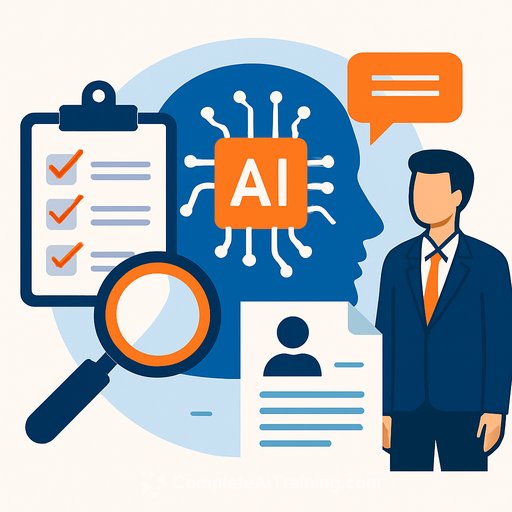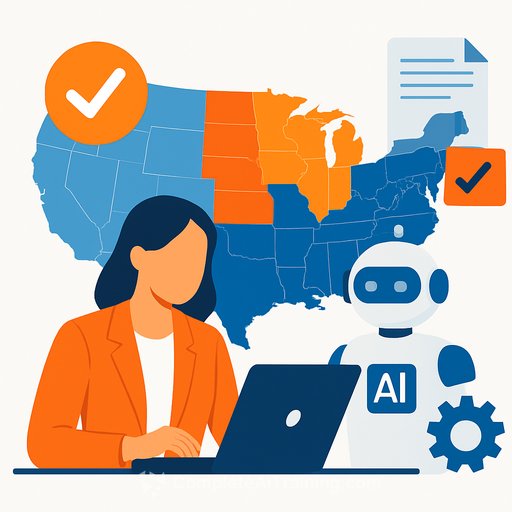How AI Streamlines Everyday Business Operations
AI has moved from theory to the daily to-do list. For HR and Operations, it cuts the busywork, raises accuracy, and exposes bottlenecks you can fix fast.
The result is simple: fewer manual tasks, cleaner data, faster decisions, and teams focused on work that moves the business.
The Promise of Operational AI
AI brings two core advantages: automation and intelligent optimization. It takes repetitive workflows off your plate and highlights where processes stall or break.
Models analyze operational data to spot issues early-predicting equipment maintenance, surfacing compliance risks, and removing choke points in hiring, support, and supply chains. This shifts teams from reacting to running proactively.
If you need help mapping AI to specific workflows or standards, generative AI IT services can configure tools around your policies, data, and approvals.
Automating Routine Tasks
Automation is the clearest win because it shows results fast. Start where volume is high and errors are costly.
- HR: Resume screening, interview scheduling, candidate comms, onboarding checklists, attrition risk flags.
- Finance/Accounting: Invoice capture and matching, expense validation, reconciliation, close checklists, anomaly alerts.
- Logistics/Ops: Demand-based inventory targets, route planning, dock/slot scheduling, delay prediction.
- Customer Support: AI triage, instant answers for common cases, smart routing, CSAT sentiment detection.
Automation reduces rework and keeps tasks compliant with internal rules. You get consistent outcomes and fewer late-night fixes.
Data-Driven Decision Making
AI turns raw data into signals you can act on. Predictive models forecast demand, risk, and workload; real-time dashboards flag exceptions before they grow.
Retail teams adjust pricing and stock with more confidence. Manufacturing teams cut scrap by tuning lines in real time. Finance teams spot fraud and portfolio risk earlier.
Teams using real-time analytics in operations-such as those highlighted here-report faster decisions and more agile responses across departments.
- Practical KPIs to track: Cycle time, first-time-right rate, cost per ticket/order, on-time completion, forecast accuracy, time-to-fill, DSO, CSAT/NPS.
Implementation and Integration
Buy-in starts with a clear target. Pick processes that are repetitive, rules-based, and measurable-then run a focused pilot.
- 30 days: Map one workflow end-to-end; define inputs, outputs, exceptions, and approval rules. Secure data access and consent.
- 60 days: Launch a pilot with a small group. Track baseline vs. new performance. Gather feedback and refine prompts, rules, and handoffs.
- 90 days: Scale to adjacent teams. Automate downstream steps. Add alerts, role-based access, and audit logs.
Keep integration simple: use APIs and cloud connectors to plug AI into HRIS, ERP, ATS, WMS, and support platforms without ripping anything out. Align with privacy and data governance policies, and adopt recognized guidance like the NIST AI Risk Management Framework.
Change management matters. Explain what the system does, where humans stay in control, and how performance is measured. Train teams on prompts, reviews, and exception handling.
Common Pitfalls and How to Avoid Them
- Poor data quality: Standardize inputs, validate sources, and monitor drift. Garbage in still means garbage out.
- Over-automation: Keep humans on approvals, sensitive comms, and edge cases. Automate the routine; supervise the rest.
- Siloed pilots: Share templates, prompts, and metrics across HR, Ops, and Finance to avoid duplicate work.
- Vendor lock-in: Prefer open APIs and exportable logs. Own your prompts, workflows, and data schema.
- Unclear ownership: Set RACI for data, model performance, and incident response. Measure and review monthly.
Future of AI-Driven Operations
AI is moving toward adaptive systems that learn from context and trigger actions on their own-rerouting shipments, rebalancing schedules, or flagging flight-risk employees before the exit interview.
Expect more self-correcting workflows and fewer manual status checks. HR and Operations leaders shift from task management to system design: defining guardrails, reviewing metrics, and improving loops.
Skills to prioritize: prompt writing for operational tasks, data literacy, workflow mapping, and vendor evaluation. Teams that build these skills will gain speed and resilience.
Next Steps
Pick one workflow, set a clear metric, and run a 90-day pilot. Prove the value, then standardize and scale.
If you want role-based upskilling for HR and Operations, explore curated options here: AI courses by job.
Your membership also unlocks:










